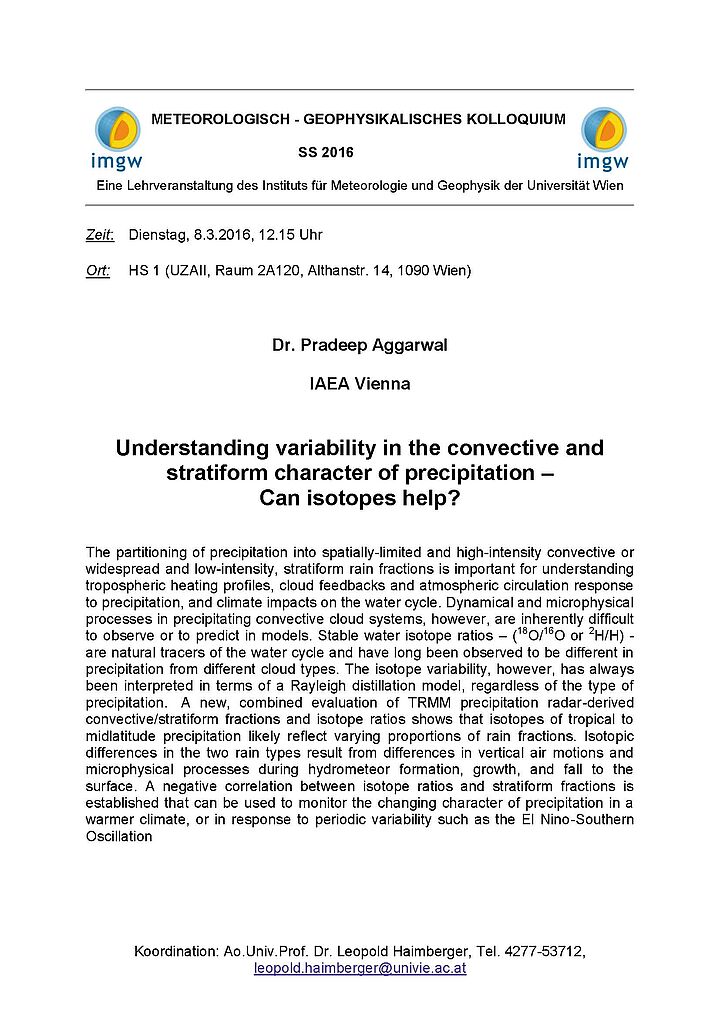Dienstag, 08. M�rz 2016, 12:15 - 13:15 iCal
METEOROLOGISCH - GEOPHYSIKALISCHES KOLLOQUIUM
Understanding variability in the convective and stratiform character of precipitation – Can isotopes help?
HS 1, Raum 2A120
Althanstr. 14, 1090 Wien
Vortrag
The partitioning of precipitation into spatially-limited and high-intensity convective or widespread and low-intensity, stratiform rain fractions is important for understanding tropospheric heating profiles, cloud feedbacks and atmospheric circulation response to precipitation, and climate impacts on the water cycle. Dynamical and microphysical processes in precipitating convective cloud systems, however, are inherently difficult to observe or to predict in models. Stable water isotope ratios – (18O/16O or 2H/H) - are natural tracers of the water cycle and have long been observed to be different in precipitation from different cloud types. The isotope variability, however, has always been interpreted in terms of a Rayleigh distillation model, regardless of the type of precipitation. A new, combined evaluation of TRMM precipitation radar-derived convective/stratiform fractions and isotope ratios shows that isotopes of tropical to midlatitude precipitation likely reflect varying proportions of rain fractions. Isotopic differences in the two rain types result from differences in vertical air motions and microphysical processes during hydrometeor formation, growth, and fall to the surface. A negative correlation between isotope ratios and stratiform fractions is established that can be used to monitor the changing character of precipitation in a warmer climate, or in response to periodic variability such as the El Nino-Southern Oscillation.
Veranstalter
Institut für Meteorologie und Geophysik
Kontakt
Prof. Leopold Haimberger
Institut für Meteorologie und Geophysik
537 12
leopold.haimberger@univie.ac.at
Erstellt am Dienstag, 01. M�rz 2016, 09:49
Letzte Änderung am Dienstag, 01. M�rz 2016, 13:42

